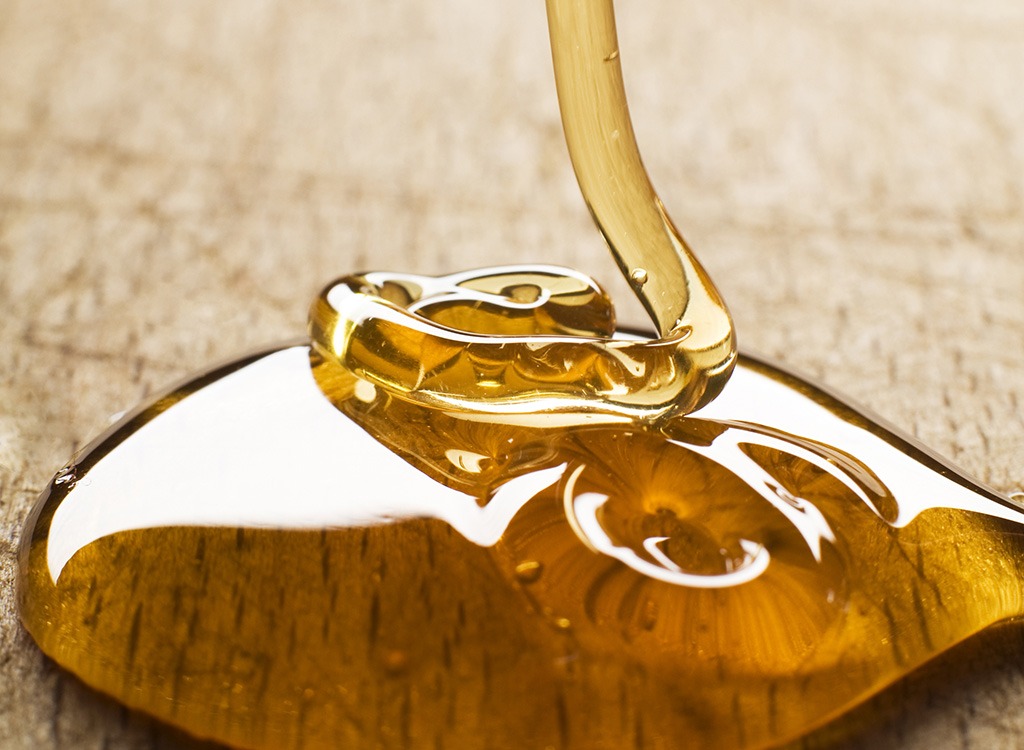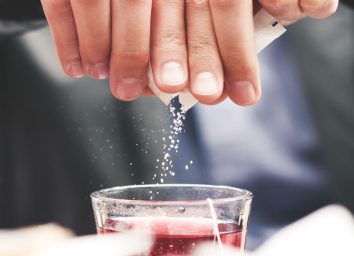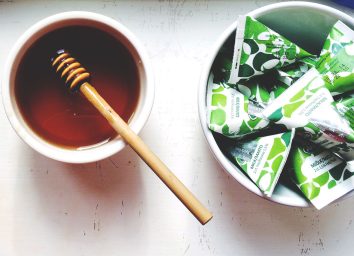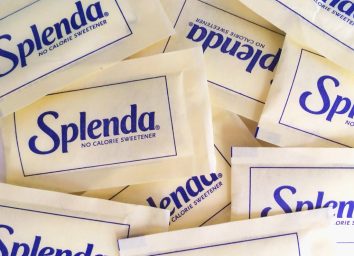Is High Fructose Corn Syrup Really That Bad For You?

Chances are you’ve heard of high fructose corn syrup (HFCS) and have maybe even seen it on nutrition labels for sodas and candies. People often blame it for playing a major role in the American obesity epidemic.
Despite its ubiquity, not everyone has a firm grasp of exactly what the sweetener is, where it hides, and why the consensus seems to be to avoid it if and when you can.
With that in mind, we’ve put together a guide to HFCS that is designed to tell you all you need to know about the substance sweetening manufactured foods from juices to more unassuming food items such as salad dressing and tomato sauce. (And—spoiler alert—while it provides little nutritional value, high fructose corn syrup is likely not the sole cause of increasing obesity rates.)
What is high fructose corn syrup and why is it added to food?
HFCS is a common sweetener that manufacturers make from cornstarch. As its name describes, fructose is one of the main types of sugar found in HFCS.
To create this sweetener, manufacturers combine corn with water and enzymes to produce corn syrup, which is essentially 100 percent glucose. Once the liquid is produced, additional enzymes are introduced to convert some of the glucose into fructose.
The “high fructose” in high fructose corn syrup describes the higher levels of fructose compared to pure corn syrup. Pure corn syrup is traditionally nearly 100 percent glucose.
Now, glucose and fructose are two different forms of sugar, so why put effort into turning one sugar into another? A higher percentage of fructose creates a product that is even sweeter than sucrose or table sugar. It’s also less expensive than sugar. This is great for manufacturers because they now have a versatile ingredient that can be used in an array of food and beverages. Plus, manufacturers can use less HFCS to yield the desired flavor profile because the sweetness is more concentrated than granulated sugar.
What foods contain high fructose corn syrup?
While HFCS appears in desserts and sugary drinks, the sweet substance also sweetens food items you might not have expected. Some surprising sources of HFCS include “healthy” foods such as salad dressings, yogurts, and even bread.
In fact, HFCS is so prevalent that in 2016, the U.S. Department of Agriculture estimated the average American consumed approximately seven teaspoons of it per day, which adds up to about 24 pounds per year.
How is high fructose corn syrup different than sugar?
Sucrose is the formal name for table sugar. It’s a combination of one glucose molecule and one fructose molecule. This disaccharide (two sugar molecules bound together) is naturally found in plant-based foods including fruits, vegetables, and the sugarcane and sugar beets from which table sugar is produced.
Fructose appears naturally in fruit, some vegetables, and honey. However, it’s unique from sucrose and glucose in that it has a sweeter taste while having the lowest impact on blood sugar, which is a good thing. While fruits contain natural fructose, enzymes produce the fructose in HFCS.
Just like table sugar, HFCS is a combination of glucose and fructose.
High fructose corn syrup is different from table sugar in the following ways:
- The ratio of fructose and glucose: There are two common formulations of HFCS that contain varying percentages of fructose. HFCS 42 contains 42 percent fructose and HFCS 55 contains 55 percent fructose. The rest of the HFCS is glucose and water. Sugar is 50 percent fructose, which sits in the middle of the two common HFCS formulations.
- Water content: Processors dilute HFCS with water, but there is no water in table sugar.
- Chemical bonds between sugar molecules: In sugar, a chemical bond joins glucose and fructose. In HFCS, there is no chemical bond between the two simple sugars.
So why has this liquid sweetener been under more scrutiny than its granulated counterpart?
Why is high fructose corn syrup bad for us as a sweetener?
All added sugars, including HFCS, table sugar and even “all-natural pure cane sugar” that is marketed as a better quality sugar, have the potential to lead to weight gain and related health conditions.
Currently, there is enough conflicting research on HFCS it is hard to say exactly how bad it is for us. Some research has noted no significant metabolic or endocrine response difference between HFCS and sucrose while other research concludes HFCS can cause metabolic dysfunction and contributes to obesity more significantly than other sweeteners.
It is well documented that fructose can increase hunger and desire for food which can make weight control more challenging, and that high sugar diets, including sucrose and HFCS, can increase risk for obesity and increase levels of triglycerides, blood sugar, and blood pressure.
Is high fructose corn syrup worse for you than white sugar?
Because of the amount of conflicting research, we cannot concretely say HFCS is worse for our health than table sugar. However, we do know that high-fructose-containing food and drink products do contribute to increased rates of obesity and chronic diseases.
Although you may include these products as part of a wholesome, well-rounded diet, it’s not the healthiest approach. For the most part, sweetened beverages, baked goods, candy, and sweetened snack do not contribute beneficial nutrients.
Whether adding sugar to your coffee or picking up fruit snacks made with HFCS, it is in our best interest to reduce all forms of added sugar and increase less processed forms of carbohydrate in their natural state.
Conclusion
It is not fair to contribute our rise in obesity and related health conditions to one single ingredient. It is, however, reasonable to think the increase in the availability of processed food items and sweetened beverages that use different forms of sugar have contributed negatively to our health.








